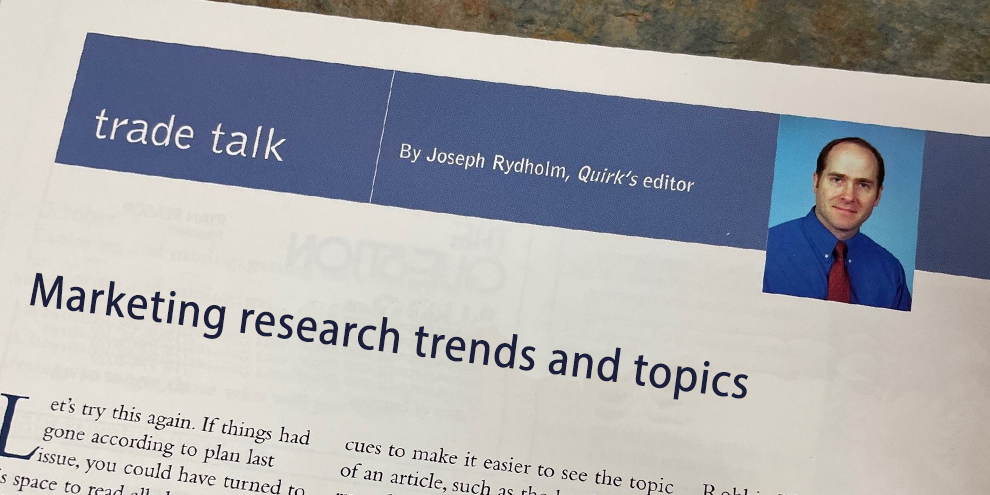Two of my favorite topics are baseball and marketing research. A few months back, I had the chance to combine them, thanks to the Minnesota/Upper Midwest chapter of the Marketing Research Association.
Chapter organizers invited Dave St. Peter and Patrick Klinger - team president, and vice president of marketing, respectively - of my beloved Minnesota Twins, to talk to a group of Twin Cities researchers prior to a day game against the Toronto Blue Jays about how the team uses marketing research. As if that wasn’t interesting and fun enough (I know, I’m a nerd), we also took in the game afterwards (Joe Mays pitched the Twins to a brisk, efficient 4-0 victory).
On the surface, you might think the Twins wouldn’t need to conduct research. Attendance is up 28 percent this year, TV ratings for game broadcasts are skyrocketing, and the team has won its division three years in a row despite having one of the lowest payrolls in baseball.
But the Twins play in the lackluster Metrodome, and with recreational opportunities abounding (that whole “land of 10,000 lakes” thing) and an often limited amount of time to enjoy them, it takes quite a bit of effort to entice the casual fan to spend a beautiful summer evening indoors. So marketing and marketing research are essential.
Though team owner Carl Pohlad’s wealth rivals Croesus, he runs the Twins on a tight budget, and it’s likely that that parsimony extends to the front office as well. Still, Klinger said the club does as much research as any team in baseball, so kudos to the marketing department for finding ways to wring the most from its modest funds.
Mine that data
Like a lot of organizations, Klinger said the Twins have a wealth of information on their customers and are still finding ways to mine it. The team talks to season ticket holders, single-game ticket buyers, group ticket buyers, the general population and former season ticket holders using a variety of methods from Web surveys to focus groups.
Fan intercepts are done during nearly every Twins homestand using PDAs, which replaced paper surveys about a year ago. Question topics include type of ticket purchased, number of games attended, advertising slogan awareness, other favorite leisure-time options (movies, fishing, shopping), and primary sources of information about the team (Web, radio, TV, newspaper, friends).
Telephone research with the general public is also conducted. Respondents are asked if they are sports fans and if so, how they feel about the Twins, are they going to any games, what do they think of the team’s advertising, etc.
Another popular form of research Klinger cited - one that doesn’t cost a cent - is venturing into the ballpark to talk to and observe the fans. How do they like the food? What brought them to the game today? What between-inning entertainment draws the best reaction - Kiss Cam or Guess That Twin?
The team also conducts sessions with corporate partners in which the companies offer input on ticket package plans, advertising campaigns and promotion ideas.
Emotional attachment
The Twins benefit from the emotional attachment that the community has to the team, St. Peter said. It’s a bond, cemented by World Series championships in 1987 and 1991, that has somehow endured in spite of the Metrodome’s sterile confines and Pohlad’s repeated threats to move or shutter the team. A survey of season-ticket holders found that while 26 percent said they liked the Metrodome and 24 percent expressed indifference, a total of 45 percent said they disliked or strongly disliked it.
But if the stars align, perhaps the Metrodome albatross will soon be removed from the team’s neck. A plan for a new, open-air stadium in downtown Minneapolis is under consideration by lawmakers. If that dream becomes a reality - and legislators stop focusing on minor things like the state budget - the Twins marketing staff likely won’t have time to conduct research. They’ll be too busy fielding phone calls from distant relatives and long-lost friends desperate to secure tickets to the sold-out games in the new ballpark.
